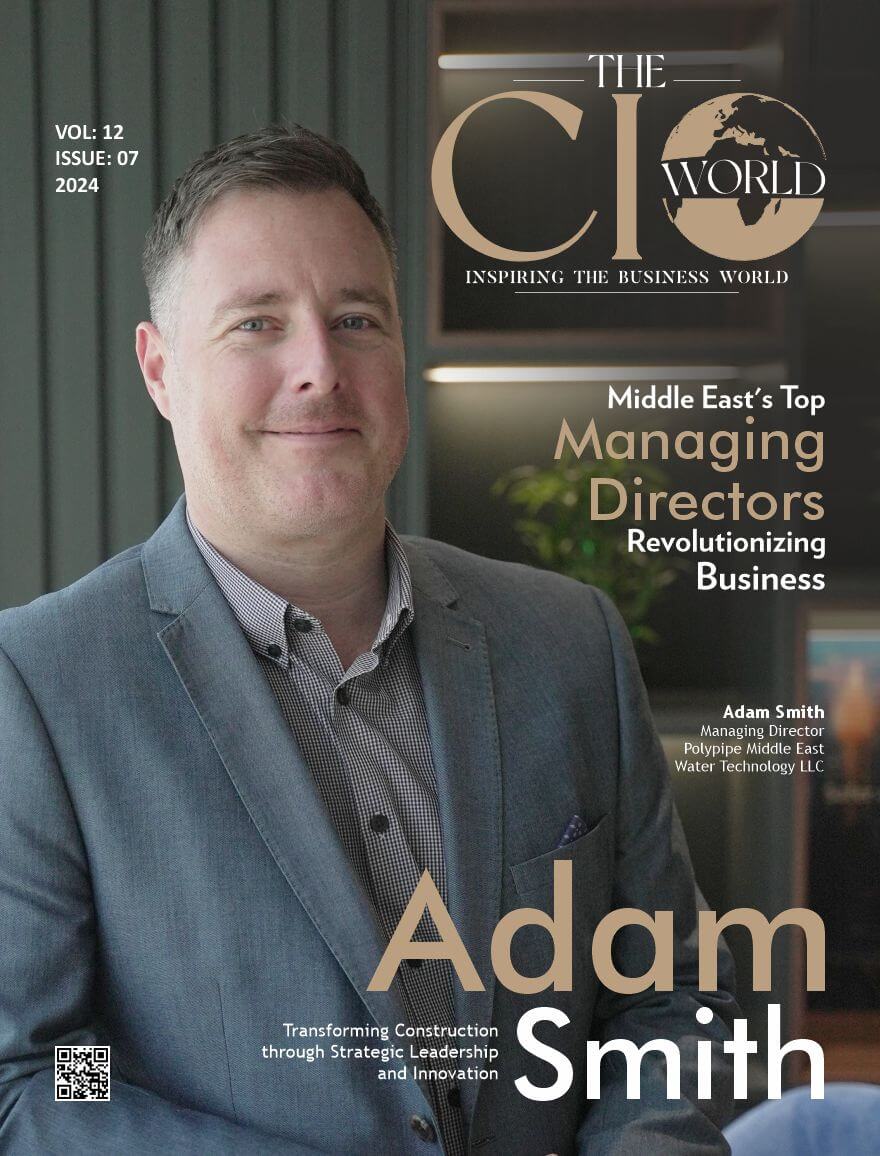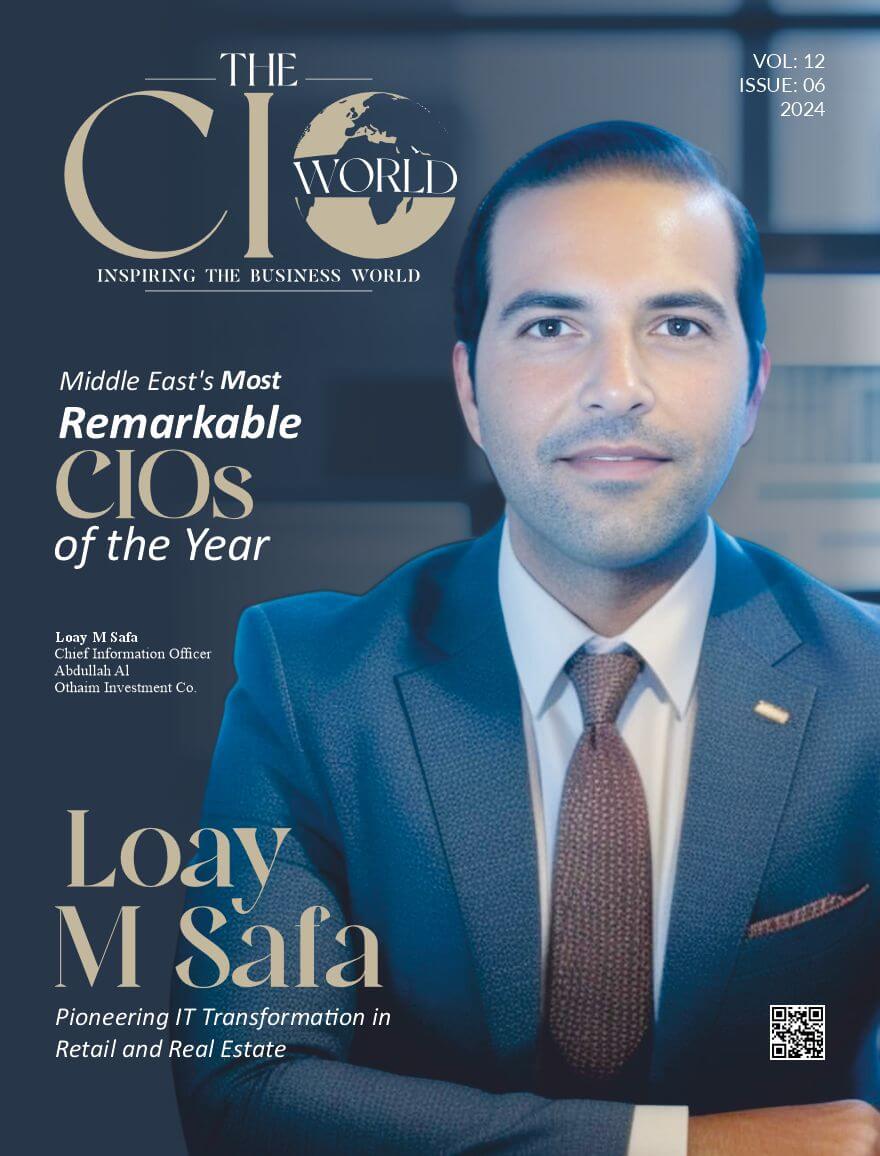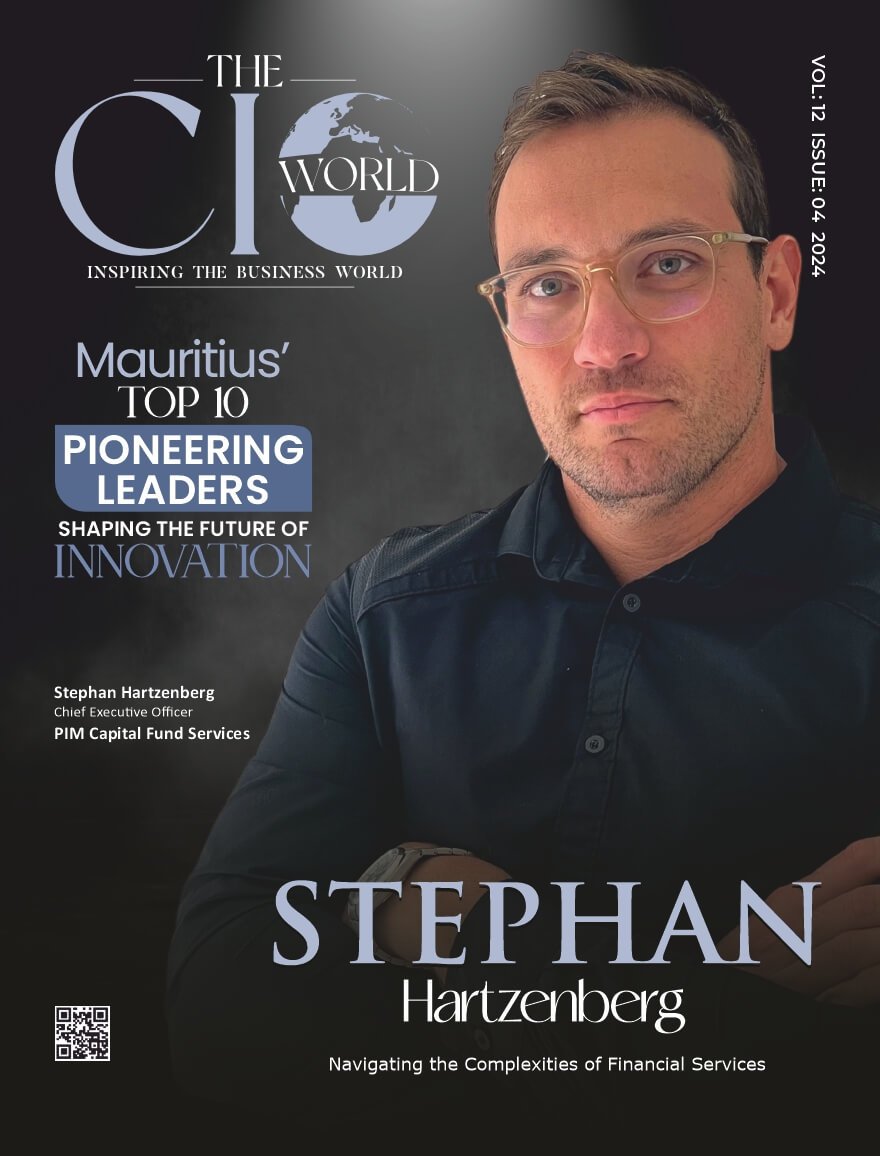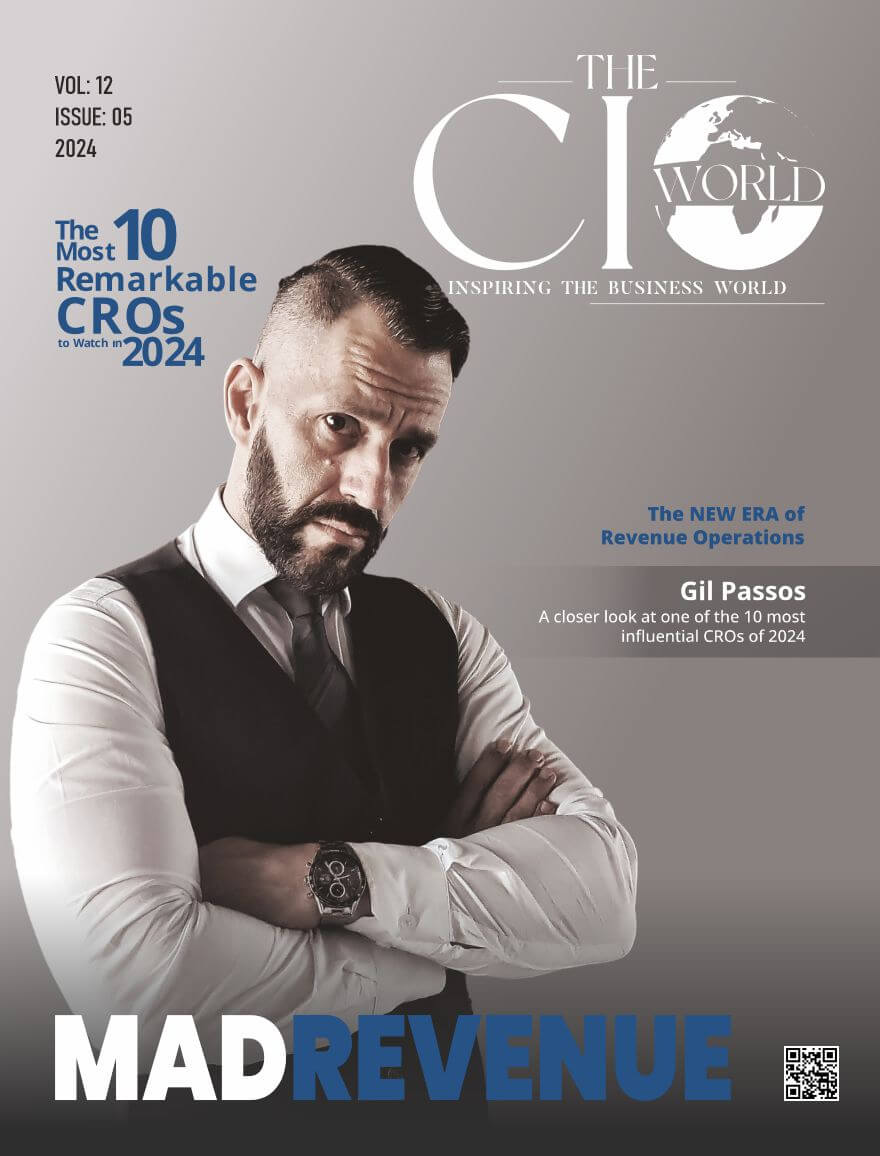Mastering the Fusion of Business and Computer Science for Enhanced Patient Care and Value-Based Healthcare!
“Can technology redefine the future of healthcare?” This pivotal question has become the guiding force behind the groundbreaking work of Mohamed Youssef, Chief Technology Officer at AYM Solutions. As an internationally recognized and accomplished leader in the realm of Digital Health solutions development, he is not just navigating the currents of technological innovation; he’s charting a course toward a future where technology and healthcare seamlessly converge for the benefit of all.
Youssef’s journey to the forefront of digital health leadership is as impressive as the solutions he envisions. Armed with a master’s degree in business administration from the University of Strathclyde and currently pursuing a Master’s degree in Computer Science from Virginia Commonwealth University, his academic trajectory has been a deliberate exploration of the intersection between technology and healthcare.
His passion for this convergence is not merely academic; it’s deeply rooted in a commitment to enhancing patient care and outcomes within a value-based healthcare framework. Youssef’s mission is clear: to leverage technology as a catalyst for positive change in the healthcare landscape.
At the helm of AYM Solutions, he is the driving force behind the technical vision that propels the company forward. His innovative and forward-thinking approach has not only earned him international recognition but has also positioned AYM Solutions as a trailblazer in the digital health arena.
In an era where the digitization of healthcare is not just a luxury but a necessity, Youssef stands as a beacon of inspiration. His journey, marked by a relentless pursuit of knowledge and a dedication to transformative solutions, signifies a paradigm shift in the way we approach healthcare in a technologically driven world.
Below are the interview highlights:
Could you please brief about AYM Solutions and its inception story?
AYM Solutions is a software development company specializing in providing digitalization solutions for the healthcare sector. AYM Solutions has the only fully proprietary technology platform that was developed specifically for the Middle East and was not developed through acquisitions. This means comprehensive workflows and outstanding service and support.
AYM Solutions has incepted out of the Middle-East market need for healthcare solutions that perfectly fit the settings of healthcare systems in the Middle East rather than importing solutions developed for US or European markets that require extensive efforts to bend them to fit healthcare system workflows and business targets.
What strategies do you employ to drive innovation and technological advancement within your organization, and how do you prioritize technology projects and initiatives to align with the company’s goals and objectives?
At AYM Solutions, fostering innovation and technological advancement is a core focus. We employ several strategies to drive this forward:
- Culture of Innovation: We cultivate an environment where creativity is encouraged and everyone feels empowered to share ideas. This inclusive culture sparks innovation at all levels of the organization.
- Continuous Learning: We invest in our team’s development by providing opportunities for learning and upskilling. Staying updated with the latest technologies is crucial for us to innovate effectively.
- Cross-Functional Collaboration: We promote collaboration between different departments. This ensures that diverse perspectives come together to solve problems and generate innovative solutions.
- Research and Development (R&D): A dedicated R&D team focuses on exploring emerging technologies and their potential applications to stay ahead in the industry.
- Agile Approach: We embrace an agile methodology to swiftly adapt to changes and iterate on ideas. This allows us to test concepts, gather feedback, and refine solutions efficiently.
When it comes to prioritizing technology projects and initiatives, we align them with the company’s goals and objectives by:
- Understanding Business Needs: We closely collaborate with stakeholders to comprehend business priorities, challenges, and opportunities.
- Impact Assessment: Each proposed project undergoes rigorous evaluation to determine its potential impact on the company’s goals, customer satisfaction, revenue, and operational efficiency.
- Risk Analysis: We assess the risks associated with each project to ensure that the chosen initiatives are feasible and align with the company’s risk tolerance.
- Resource Allocation: We allocate resources based on project priorities, considering factors such as urgency, potential ROI, and strategic importance to the organization.
- Regular Review and Adaptation: We continuously monitor project progress and reassess priorities if needed to ensure that our technology initiatives stay aligned with the evolving needs of the company.
Can you share an example of a successful technology implementation that you have overseen and its impact on the organization?
Implementation of real-time Clinical Decision Support Software for Dubai Health Facilities. The software unprecedentedly unifies the medical necessity guidelines along with physicians’s practices to ensure the best utilization and management of facility services and the best patient outcome. This project did put AYM Solutions on top of healthcare digital solution providers, as we proved that digital health solutions tailored for the Middle-East market have a greater impact on business outcomes than any other solutions adopted.
How do you ensure the security and integrity of the organization’s technology infrastructure?
AYM Solutions is adopting Zero-Trust Architecture which provides many benefits in securing our technology infrastructure, including the following:
- Enhanced Security Posture: ZTA fundamentally challenges the traditional perimeter-based security model by assuming that no user or system, inside or outside the network, should be trusted by default. This approach minimizes the risk of breaches and unauthorized access.
- Granular Access Controls: ZTA focuses on strict access controls based on identity verification, device health, and other contextual factors. It allows us to implement granular access policies, ensuring that users only have access to the specific resources they need for their roles.
- Reduced Attack Surface: By implementing ZTA, we reduce the attack surface by segmenting the network and enforcing strict controls on data access. Even if one part of the system is compromised, it limits the lateral movement of threats, minimizing potential damage.
- Adaptability and Flexibility: ZTA is adaptable to various environments, including cloud-based, on-premises, and hybrid infrastructures. This flexibility allows us to scale security measures alongside business growth and technological advancements.
- Improved Visibility and Monitoring: ZTA provides enhanced visibility into network traffic, user behavior, and device health. This visibility enables us to detect anomalies more effectively and respond to potential threats in real time.
- Regulatory Compliance: With its emphasis on identity-centric security and continuous monitoring, ZTA helps in meeting compliance requirements more effectively, which is crucial in various industries with stringent regulations.
- User Experience: Contrary to the belief that stringent security measures might hinder the user experience, ZTA can actually improve it. With access tailored to specific needs and the ability to work from various devices securely, employees experience smoother workflows.
What steps do you take to stay up-to-date with the latest trends and advancements in technology?
- Continuous Learning Culture: We encourage our teams to engage in continuous learning. This includes attending workshops, seminars, and industry conferences to stay abreast of the latest advancements.
- Industry Networking: We actively participate in industry forums, collaborate with other technology leaders, and engage in partnerships. This not only fosters relationships but also allows us to exchange insights and stay updated on emerging trends.
- Monitoring Tech Publications and Research: We regularly follow reputable tech publications, research papers, and analyst reports. This helps us understand emerging technologies and their potential impact on various industries.
- Internal Knowledge Sharing: Within our organization, we emphasize knowledge sharing. Teams regularly conduct internal sessions, sharing their learnings from experiments, projects, and external events.
- Engagement with Technology Communities: Participation in online forums, tech communities, and open-source projects allows us to tap into collective knowledge and stay informed about evolving technologies.
- Collaboration with Innovators: We actively seek collaborations with startups, academia, and research institutions. This collaboration often exposes us to groundbreaking technologies and innovative solutions.
- Technology Evaluation and Experimentation: We regularly evaluate new technologies through proof-of-concepts and experimentation. This hands-on approach helps us understand the practical implications and potential applications of emerging technology.
How do you foster a collaborative and productive relationship between the technology team and other departments within the organization?
- Open Communication Channels: We ensure open lines of communication between tech teams and other departments. Regular meetings, both formal and informal, facilitate discussions, idea-sharing, and problem-solving.
- Cross-Departmental Projects: Encouraging collaboration through joint projects helps break down silos. By working together on initiatives that involve multiple departments, teams gain a deeper understanding of each other’s goals and challenges.
- Understanding Business Objectives: Technology teams are encouraged to understand the specific goals and needs of other departments. This helps in aligning technology solutions with the broader organizational objectives.
- Collaborative Decision-Making: Involving representatives from different departments in decision-making processes regarding technology implementations ensures that solutions meet diverse needs and concerns.
- Training and Knowledge Sharing: Providing training sessions and resources about technological advancements to non-tech departments helps bridge the knowledge gap and encourages informed discussions.
- Shared Metrics and Goals: Establishing shared metrics and goals across departments promotes a sense of collective responsibility. It aligns everyone towards common objectives, fostering collaboration to achieve those goals.
- Feedback Loops: Creating mechanisms for feedback and improvement ensures continuous improvement in collaboration processes. Regular feedback from different departments helps refine technology solutions to better suit their needs.
- Cultural Integration: Cultivating a company culture that values and promotes collaboration across departments is essential. Recognizing and celebrating successful collaborative efforts reinforces this culture.







